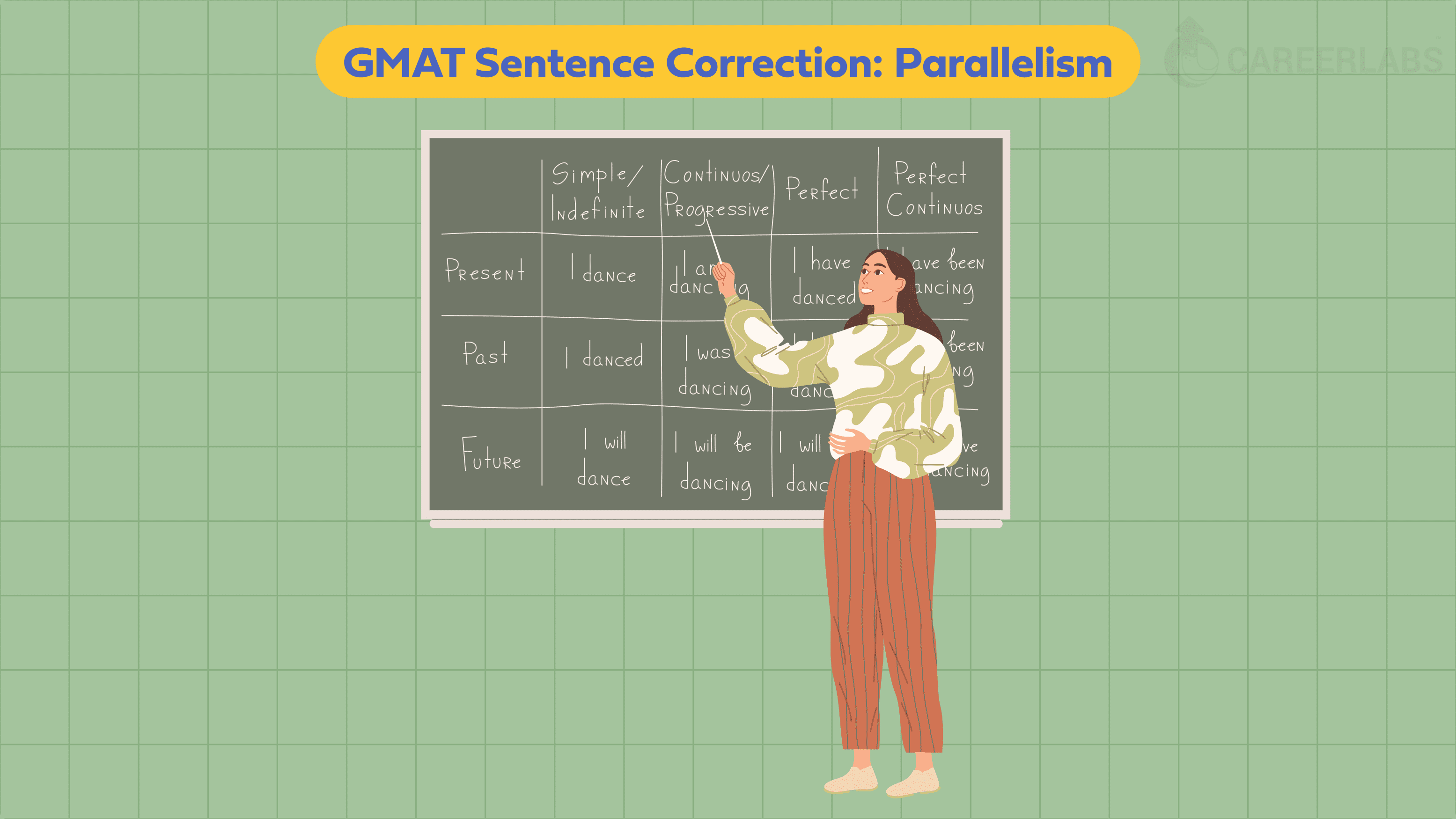Are you having difficulty with GMAT Sentence Correction questions? In specific, the parallelism questions? We will help you comprehend the GMAT Sentence Correction Parallelism questions.
The GMAT Verbal Sentence Correction questions test your proficiency in the English language. It tests your ability to construct concise, well-structured sentences that make logical sense, bringing out the meaning clearly. Most questions in the GMAT sentence correction question will require you to identify common errors in English, and either modify or rectify these errors to form a meaningful sentence.
The GMAT sentence correction questions deal with several fundamental grammatical concepts. One such concept is parallelism. Parallelism is one of the most basic rules of grammar that you need to master in order to crack the sentence correction question.
So, let us begin by understanding— what is parallelism? Parallelism is when two or more phrases or clauses in a sentence have the same grammatical structure. Just like geometry, parallelism in English is when two clauses head in the same direction but do not meet. It is focused on retaining balance in the sentence structure.
An example of faulty parallelism looks like this: I like to dance and singing. While fixing faulty parallelism, you need to make sure that the grammatical construction is consistent. Keeping this in mind, the rectified sentence would look like this: I like dancing and singing.
Parallelism Errors
Parallelism errors usually occur amongst prepositional phrases, infinitive phrases, participle phrases, and gerund phrases. Let us have a quick look at these phrases.
Prepositional phrases: These phrases refer to those that have a preposition present and an object following the preposition. The object of the preposition is usually a noun or a pronoun. For example, “ They are sitting on the table”. Here “on the table” is the prepositional phrase and the object of the preposition is “table”.
Infinitive phrases: These phrases consist an infinitive or other modifiers. The infinitive can be a noun, adverb or adjective. The infinite is always accompanied by a “to” (to + infinitive). For instance, “I would like to help you with the funds”.
Participle phrases: These phrases contain a group of past participles or present participles. The participles are usually accompanied by a comma and acts as an adjective in the sentence. For example, “The students, dressed in blue uniform, are the winners of the tournament”.
Gerund Phrases: A gerund refers to a verb in continuous tense (verb+ ing). A gerund phrase refers to a phrase with a gerund and other words related to it. The gerund in this phrase functions as a noun. For instance, “She started reading a book”. Here the gerund is “reading” and the noun is the “book”.
How to Avoid Parallelism Errors
There are various ways to avoid parallelism errors, here are a few pointers to deal with the same:
- If an idiom is used in a sentence, it should always be parallel.
- Verbs in a sentence need to be in the same tense. For example, “He came, he saw and he conquered”. The verbs in the given sentence are in the past tense.
- Verify whether nouns are plural or singular throughout the sentence. A singular noun juxtaposed with a plural noun is a common parallelism error.
- The grammatical structure in a sentence must be consistent. For example, “I like reading and writing”. It cannot be “I like to read and writing”.
- In order to construct a grammatically sound sentence and to avoid parallelism, conjunctions or coordinating conjunctions are used. Nor, for, and, but, yet, or, so are some examples of coordinating conjunctions.
We hope this article gives you a brief overview of the GMAT sentence correction parallelism and the errors that you should avoid. If you are thorough with parallelism errors and how to rectify them, you can easily ace the GMAT Verbal section.











Talk to an expert?